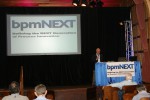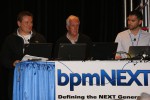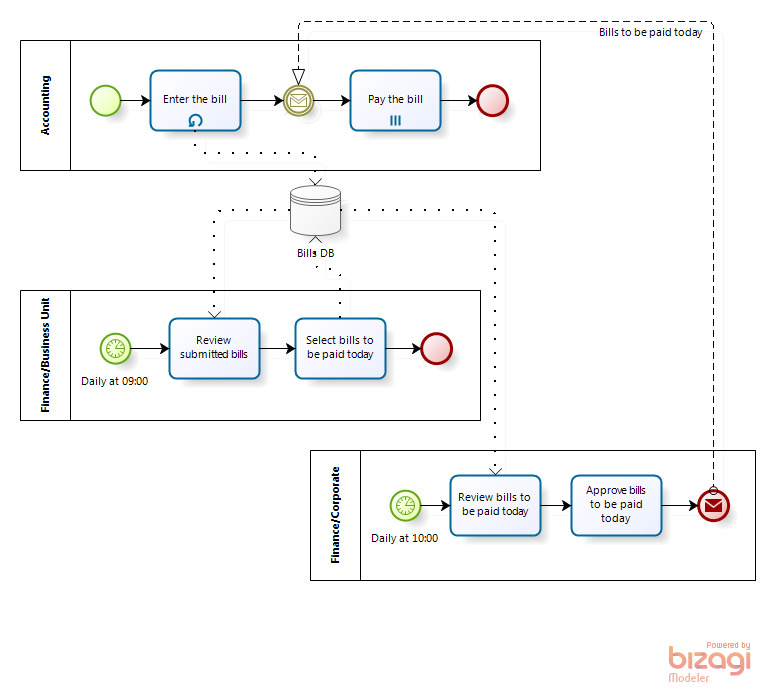Below is the collection of tweets I didn’t send from Asilomar. The asterisks designate my personal favorites.
March 25, 2014:
Foreword from Bruce Silver: We gathered people well-known in the industry. People knowing the answers, no sales guys.
Me: there is more use from smart guys saying wrong things than v.v.
Brayan Reale (Colosa/ProcessMaker) presented FormSlider - nice app builder for structured and ad hoc workflow. If you have to set it up then it’s designed poorly. #ui
Me: in few years desktop development tools will become obsolete.
Romeo Elias (Interneer): BPM for small-IT or no-IT organizations. Ability to work offline and store everything locally until reconnected. #ui
Scott Francis (BP3): Brazos mobile UI, continued from last year. Responsive HTML rules! Mobile UI should not just match the desktop UI - it should be superior. Proposed: register and play. Promised: 1) single UI for different engines (so far: IBM and Activity) 2) make Brazos Open Source. #ui
Me: there is a room for industry initiative - standardize process engine API.
Roger King (TIBCO): task/resource management in big organizations (thousands of branches). Started talking about modeling but has fallen to program code too far. #org
Me: thanks for the reference to Resource Patterns work by Van der Aalst et al.
Jim Sinur (not Gartner): the next catch phrase is Intelligent Agent. #agent
March 26, 2014:
** Tom Baeyens (Effektif): value of cloud - register and login vs. install and setup. No dependency on IT, cheap (do it yourself), scalable from personal to enterprise (oh really?). Inspired by UI from Trello and IFTTT. Decisions implemented via buttons on a user task preceding the gateway (questionable). #ui
Me: thanks for the reference to Amazon Simple Workflow.
* Stefan Andreasen (Kapow, now part of Kofax): hook up web applications by emulating browser session. Robot (web crawler) presented itself as API to a specific app. No coding: build by example. “Best on show” winner. #integration
Me: similar approach was used to wrap up “green terminal” apps in the past. So the idea is not that new but the implementation looks pretty nice.
E. Scott Menter (BPLogix): GANTT instead of BPMN. Predict future timeline of the process. #analysis
Jean-Loup Comeliau (W4): global model for process and data. BPMN data stores mapped to data classes. #arch #bpmn
Denis Gagne et al. (Model Interchange Workgroup): live model interchange demonstration between 12 BPMN tools. #bpmn
Me: from BPM practice perspective, model interchange is more a “checkbox feature” than a necessity. Yet from BPMN adoption perspective it’s important to make BPMN a true standard.
*** Denis Gagne (Trisotech): manual BPMN validation by pinging a token plus live process flow animation by triggering multimedia content on a click. #bpmn #ui
Me: there were many talks about simplicity but Denis was the one who really made it simple - bravo! My personal vote for “best on show”.
Bruce Silver, Stephan Fischli, Antonio Palumbo (BPMessentials/itp commerce): generate “good BPMN” (based on Bruce’s “Method and Style”) by wizards. #bpmn
Me: process modeling is business programming after all. It may be simple in certain cases and complex at other. It requires professionalism. I don’t buy wizards and automatic verification in general programming neither I would in process modeling.
Gero Decker (Signavio): bridging the gap between BPA and EA - integrating Signavio with Archimate (leading enterprise architecture tool) by links. #arch
Me: don’t like loose coupling and don’t believe in round-trip. EA capabilities must be implemented within BPMS. From “What You Model Is What You Run” to “What You Architect Is What You Run”.
John Reynolds, Amy Dickson (IBM): preconditions for ad-hoc activities. Any BPMS is an event process engine. #case
Ashok Anand, R.V.S Mani (Inswit): how to democratize BPM by lowering acceptance barriers with appyio platform. #arch
Jason Bloomberg (EnterpriseWeb): Agent-Oriented Architecture. Policy-based, data-driven intelligent agents. #agent
Me: sounds great but would you approach a business analyst with “intelligent agent”? Or better yet to a business manager?
March 27, 2014:
Harsh Jegadeesan (SAP): intelligent business operations with SAP HANA, using global logistics operator as an example. Cycle time forecasting. Monitoring and KPI implemented as BPMN extensions. XES: let’s standardize on process logs for easy process mining. #arch #analysis
Me: that was probably too much for the format suggested and the case looked too tailor-made to make general conclusions about the future of BPM.
Dominic Greenwood (Whitestein): Intelligent Process Controller, another variation of Intelligent Agent theme. Using DHL as a reference: accept transportation orders on the fly, relocate track routes dynamically responding e.g. to traffic jams and other cool stuff. Goal-driven BPM. #agent
Me: similar to SAP case, too tailor-made for generalizations.
* Jacob Freund (Camunda): open source engine for java developers. bpmn.io: BPMN javascript framework, to be published soon. Amazing: simple BPMN engine implemented in javascript. Live BPMN forum. #bpmn
** Keith Swenson (Fujitsu): Cognoscenti - federated case management. Open source. Personal ACM environment for every participant. Clone projects (copying case contents) at handoffs. Let’s accept silos as domains of control. #case #arch
Me: the use case isn’t quite common but anyway that was the boldest ideas presented at the show.
James Taylor (Decision Management Solutions): model-driven rules engine. Decision Model and Notation (just beta-released by OMG). Everything at the diagram has URL. Elements: rules, documents, knowledge sources. OpenRules open source engine. #arch
François Chevresson-Aubain, Aurélien Pupier (Bonitasoft): modify connection properties on the fly for better robustness. #integration
Me: isn’t it a standard function of ESB?
Robert Shapiro: Optima - a holistic simulation and analytics tool. What-if resource utilization vs. cycle time analysis. Optima Process Capture: generate process map from log data and make predictions. #analysis
John Patton (Sight Software): another analytical tool. #analysis
Alfred Godeke, Chiel Labee (Vision Waves): from enterprise management ontology via model-driven execution to connected. #arch
Me: impressive but probably too much for the format given.
Best in Show nomination:
Special thanks to:
Now let’s look at what others say:








































